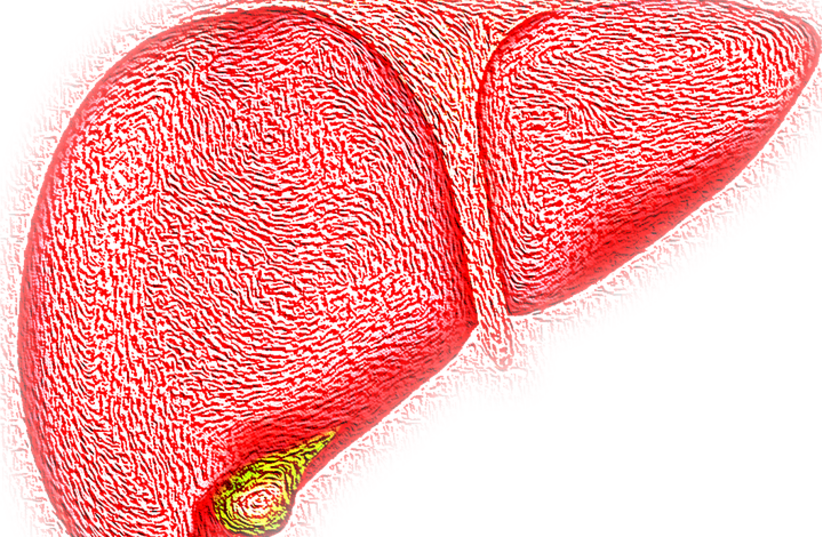Israeli scientists find cell involved in fatty liver disease progression
The findings could help make a treatment for fatty liver, a condition found in 90% of people with obesity.

An illustrative image of a human liver. (photo credit: PIXABAY)
A subtype of immune cells have been found to play a role in the
progression of metabolic liver disease, a new study from Israel's Weizmann Institute of Science revealed.
The
liver is an essential organ in the body and carries out a wide range of
vital functions. However, it is very sensitive to food, and can be
thrown into disarray by bad dietary choices and obesity.
An overwhelmingly common condition found among people with obesity is fatty liver,
a metabolic condition caused by an excess of fat building up in the
liver. This condition itself can be harmless and often have no special
symptoms, and can be resolved through simple weight-loss. But for some
who don't lose weight or change their lifestyle, it can progress into a
far more severe form called non-alcoholic steato-hepatitis (NASH), a
condition involving liver-cell death and inflammation that can lead to
life-threatening conditions like cirrhosis and liver cancer.
When
studying the link between the liver's immune system composition and the
pathology of NASH, a team of Weizmann scientists led by Prof. Ido Amit
and in collaboration with Mathias Heikenwaelder´s laboratory from the
German Cancer Research Center (DKFZ) and the Center for Liver Diseases
at Sheba Medical Center discovered the involvement of a certain subtype
of immune cells. These cells, known as dendritic cells, are activated in
the liver of NASH patients and helps the condition progress further.
Normally,
these cells function by finding immune cues in organs and relaying this
information to the T cells, which are important immune cells.
The
scientists studied the development of this condition in laboratory mice
and used new technology developed for single-cell RNA sequencing to
study immune changes in the liver. Through this method, they discovered
that a specific dendritic cell subtype, called type 1 or cDC1 for short,
expands.
They
further examined tissue taken from liver biopsies from patients between
non-alcoholic fatty liver disease and NASH and saw that the cDC1 count
correlated to how great the liver damage was.
These findings, published in the academic journal Nature Medicine, have significant implications for the treatment of fatty liver disease and NASH.
“We
know that the immune system has a role in protecting us from pathogens,
but in recent years, it has been found to be involved in other
diseases, including cancer, obesity, diabetes or even Alzheimer’s,” lead
author Dr. Aleksandra Deczkowska explained in a statement.
“The
healing potential of the immune system can be harnessed for treating
these diseases, instead of targeting the disease mechanisms directly.
This approach, known as immunotherapy, has already led to recent
breakthroughs in cancer treatment, and we believe it will soon be
extended to other medical problems, such as NASH.”
And
as obesity is increasingly common in the Western world, and around 90%
of people with obesity show signs of fatty liver, a potential treatment
could help millions of people.
THIS PAGE WAS POSTED BY SPUTNIK ONE HTTPS://DISQUS.COM/HOME/FORUM/THESPUTNIKSORBIT-BLOGSPOT-COM/
THIS PAGE WAS POSTED BY SPUTNIK ONE
HTTPS://DISQUS.COM/HOME/FORUM/THESPUTNIKSORBIT-BLOGSPOT-COM/
No comments:
Post a Comment
Stick to the subject, NO religion, or Party politics